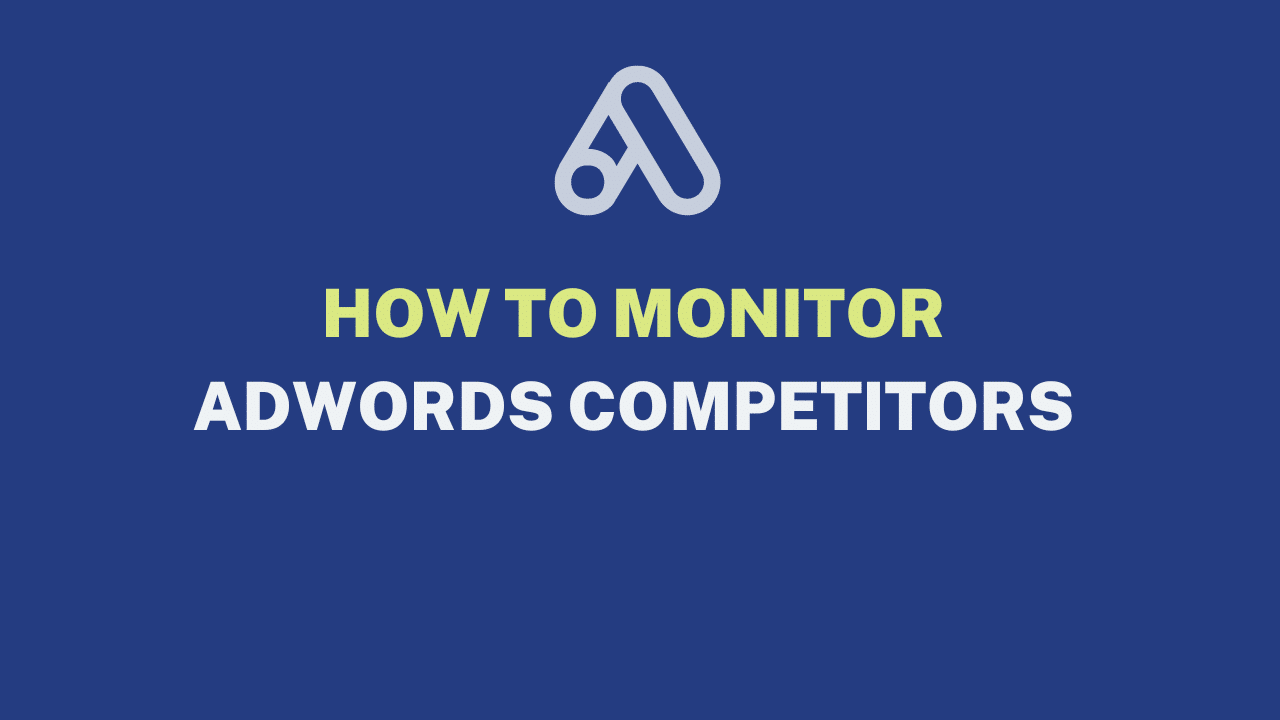Online advertising plays a pivotal role in driving business success. Among the various advertising platforms available, Google Ads stands out as a powerful tool for reaching potential customers and maximizing campaign effectiveness. However, simply launching a Google Ads campaign is not enough to guarantee optimal results.
Regularly conducting a thorough audit of your Google Ads account is essential for maintaining campaign performance, identifying areas for improvement, and maximizing your return on investment (ROI). That’s why you need to conduct a Google Ads account audit and explore the key factors that contribute to a successful advertising campaign.
Be it search ads, negative keyword lists, or multiple ad groups, this checklist will help you make the most of your Google ads audit.
Understanding the Google Ads Audit Process
A well-executed Google Ads audit offers several significant benefits. Firstly, it allows you to evaluate campaign performance and efficiency. By closely examining various metrics and key performance indicators (KPIs), you can identify areas where your campaigns are excelling and areas where they may be falling short.
Secondly, an audit enables you to identify areas for improvement. By analyzing data and reviewing campaign settings, you can uncover opportunities to refine your keywords, ad copy, and targeting parameters. This proactive approach helps you eliminate underperforming elements and implement strategies that generate better engagement and conversions.
Lastly, a comprehensive Google Ads audit aids in maximizing your return on investment (ROI). By evaluating your campaigns, you can identify wasted ad spend, eliminate irrelevant keywords or placements, and focus your resources on high-performing areas.
Pre-Audit Preparation
Before diving into a Google Ads audit, it is crucial to prepare adequately. Proper preparation ensures that you clearly understand your campaign objectives, have access to relevant data and metrics, and have a benchmark for measuring performance. These essential steps will set the foundation for a comprehensive and effective audit.
Review campaign objectives and goals
Begin by revisiting your Google Ads campaigns’ original objectives and goals. Are you aiming to increase brand awareness, drive website traffic, or generate leads? Understanding your goals will help you align your audit efforts with the desired outcomes.
Gather relevant campaign data and metrics
Collect and organize all the pertinent data and metrics associated with your Google Ads campaigns. This includes performance data such as impressions, clicks, conversions, and cost. Consider factors like campaign settings, ad copy, targeting parameters, and keywords. Ensure you have access to historical data as well as recent performance metrics.
Set benchmarks and performance targets
Establish benchmarks and performance targets to evaluate your campaigns against. These benchmarks can be based on historical data, industry standards, or internal goals. For example, you may target a specific click-through rate (CTR) or cost per conversion. Clear benchmarks provide a benchmark against which you can measure the success of your audit and subsequent optimizations.
Account Structure and Organization
A well-structured Google Ads account is vital for the success of your campaigns. A structured account ensures that your campaigns and ad groups are organized in a logical and efficient manner, allowing for better management, optimization, and performance tracking. A poorly structured account can lead to wasted ad spend, difficulty in monitoring performance, and challenges in making data-driven decisions.
Segmentation of campaigns and ad groups
Proper segmentation of campaigns and ad groups allows you to target specific audiences and tailor your messaging accordingly. You can create more relevant and targeted ads by grouping similar keywords, ad copy, and landing pages. This segmentation helps you optimize budget allocation, monitor performance at a granular level, and make necessary adjustments based on individual campaign goals.
Effective use of keywords and match types
Selecting the right keywords and utilizing appropriate match types is crucial for driving relevant traffic and maximizing ad visibility. Conduct thorough keyword research to identify high-performing and relevant keywords for your campaigns. Utilize different match types, such as broad match, phrase match, and exact match, to control the reach and precision of your ads.
Ad scheduling and geotargeting optimization
Ad scheduling allows you to control when your ads are displayed, ensuring that they appear at the most relevant times for your target audience. Analyze historical performance data and user behavior to determine the optimal ad display times. Geotargeting optimization enables you to target specific geographic locations where your target audience is located.
Ad Copy and Ad Extensions
Compelling ad copy is paramount in capturing the attention of potential customers and encouraging them to take action. It plays a crucial role in conveying your message, showcasing your value proposition, and driving engagement.
Ad extensions are additional information that can be added to your ads to provide more context and encourage user interaction. They expand the visibility and functionality of your ads, making them more appealing to users. Different types of ad extensions include site link extensions, call extensions, callout extensions, structured snippet extensions, and more. Each extension serves a unique purpose and offers specific benefits to enhance your ad campaign.
Keyword Analysis and Optimization
Analyzing keywords is a crucial step in optimizing the performance of your Google Ads campaigns. It involves researching, evaluating, and refining your keyword selection to ensure you target your ads’ most relevant and effective keywords. By analyzing keywords, you can identify opportunities to improve ad relevance, increase click-through rates (CTRs), and drive higher-quality traffic to your website.
Negative keywords are equally important in the optimization process. These are keywords that you specifically exclude from triggering your ads. By identifying and implementing negative keywords, you can prevent your ads from appearing for irrelevant search queries, reducing wasted ad spend and improving the overall efficiency of your campaigns.
Campaign Settings and Targeting
Reviewing and optimizing campaign settings and targeting options is crucial to ensure that your ads reach the right audience, maximize your budget, and align with your campaign objectives. These settings and options significantly determine your Google Ads campaigns’ visibility, reach, and effectiveness.
Network and device targeting optimization
Evaluate and adjust your campaign’s network targeting options, such as Google Search Network, Google Display Network, or YouTube. Determine which networks are performing well and delivering the desired results. Additionally, optimize device targeting by analyzing performance data and adjusting bids and ad formats to align with the preferences and behaviors of your target audience.
Budget and bid adjustments
Regularly review and adjust your campaign budget and bids based on performance data and campaign goals. Allocate your budget strategically across campaigns and ad groups to prioritize high-performing areas. Adjust bids to optimize for better ad positions, click-through rates (CTRs), or conversions. Consider leveraging automated bidding strategies for more efficient campaign management.
Ad scheduling and dayparting optimization
Analyze historical performance data to identify patterns and trends regarding the most effective times and days for displaying your ads. Utilize ad scheduling options to show your ads during peak times and exclude less effective periods. Implement dayparting strategies to adjust bids based on specific hours or days when your target audience is most likely to engage or convert.
Tracking and Measurement
Tracking and measuring campaign performance is crucial for evaluating the effectiveness of your Google Ads campaigns and making data-driven decisions. It allows you to understand your advertising efforts’ impact, identify improvement areas, and optimize your strategies for better results. By implementing proper tracking and measurement techniques, you can gain valuable insights into the performance of your campaigns and make informed adjustments to maximize your return on investment (ROI).
Various tracking tools and techniques are available to monitor and measure campaign performance. These tools provide valuable data and metrics that help you understand how your ad group performs and how users interact with them. Some commonly used tools and techniques include conversion tracking, Google Analytics, and other third-party tracking platforms.
Implementing conversion tracking
Conversion tracking allows you to measure users’ actions on your website after clicking on your ads. It helps you track specific goals, such as purchases, form submissions, or sign-ups, and attribute them to your Google Ads campaigns. By implementing conversion tracking, you can evaluate the effectiveness of your campaigns in driving desired actions and optimize your targeting and messaging accordingly.
Utilizing Google Analytics for data analysis
Google Analytics is a powerful tool for tracking and analyzing website traffic and user behavior. By integrating Google Ads with Google Analytics, you can gain deeper insights into the performance of your campaigns. Analyze key metrics, such as bounce rate, average session duration, and conversion rates, to understand how users interact with your website after clicking on your ads.
Post-Audit Analysis and Reporting
Analyzing audit findings and generating reports is a critical step in the Google Ads audit process. It allows you to comprehensively understand your campaign’s performance, identify strengths and weaknesses, and make data-driven decisions for optimization.
Key metrics and key performance indicators (KPIs) are significant in evaluating campaign performance and should be included in the audit report. These metrics provide insights into various aspects of your campaigns and help you gauge their effectiveness. Some essential metrics and KPIs to consider for the report include impressions, clicks, click-through rates (CTRs), conversion rates, cost per acquisition (CPA), return on ad spend (ROAS), and quality score.
Frequently Asked Questions
What are the key technical elements to review in a Google Ads audit?
Reviewing several technical elements for optimal campaign performance in a Google Ads audit is important. Some key areas to focus on include:
- Account structure: Assess the organization of campaigns, ad groups, and keywords for clarity and relevance.
- Conversion tracking: Verify that conversion tracking is properly implemented to measure the effectiveness of your campaigns.
- Quality score: Analyze the quality score of keywords to ensure they are optimized for ad relevance, landing page experience, and expected click-through rate (CTR).
- Ad extensions: Evaluate the utilization and performance of various ad extensions such as sitelinks, call extensions, and structured snippets.
How can I identify irrelevant keywords that are wasting my ad budget?
To identify irrelevant keywords that may be wasting your ad budget, you can follow these steps:
- Review search terms report: Analyze the search terms report in Google Ads to identify keywords that triggered your ads. Look for terms that are irrelevant to your products or services.
- Add negative keywords: Identify irrelevant keywords from the search terms report and add them as negative keywords to prevent your ads from being triggered by those terms.
- Refine match types: Evaluate the match types used for your keywords. Adjust match types to ensure your ads are shown for the most relevant search queries and exclude irrelevant variations.
How can I measure the effectiveness of my Google Ads campaigns during an audit?
Measuring the effectiveness of your Google Ads campaigns during an audit involves assessing various metrics and KPIs. Here are a few key metrics to consider:
- Click-through rate (CTR): Evaluate the CTR to determine the percentage of users who clicked on your ads. A higher CTR indicates more engaged and relevant traffic.
- Conversion rate: Measure the conversion rate to assess the percentage of users who completed a desired action, such as a purchase or form submission, after clicking on your ads.
- Cost per acquisition (CPA): Calculate the CPA to understand how much it costs you, on average, to acquire a conversion. A lower CPA indicates better campaign efficiency.
Conclusion
We encourage you to use the provided checklist as a guide for your own Google Ads audits. Tailor it to your specific needs and objectives and consider incorporating additional elements based on your industry and campaign goals. By conducting regular audits and leveraging the insights gained, you can continuously refine your campaigns, drive better performance, and achieve your desired outcomes.





